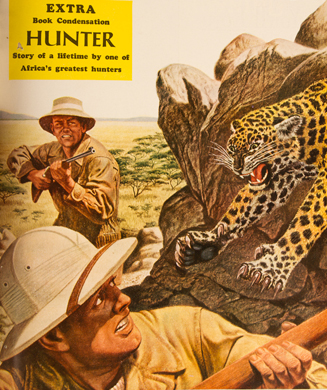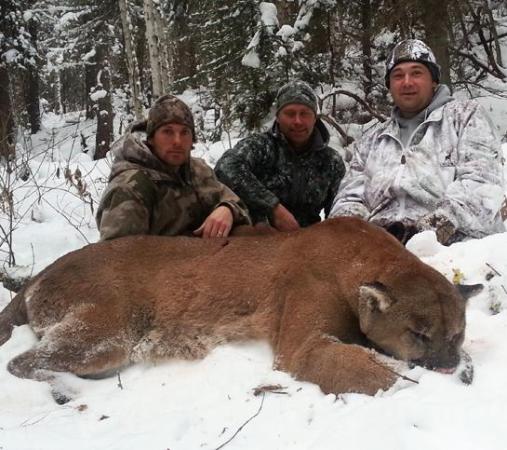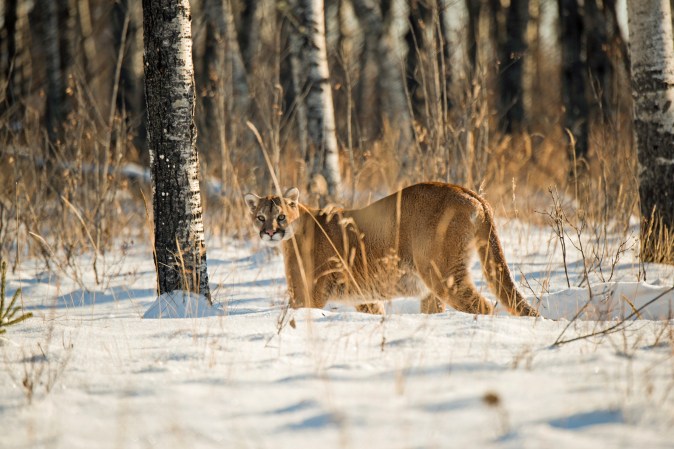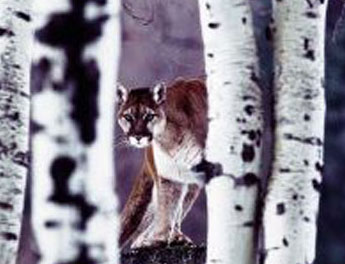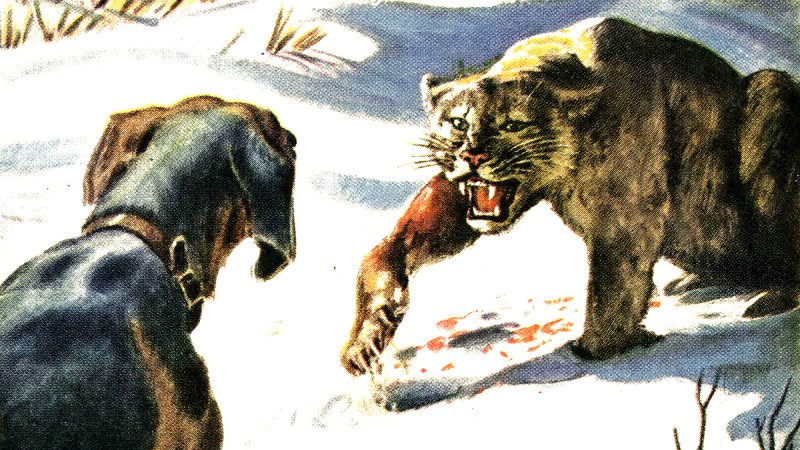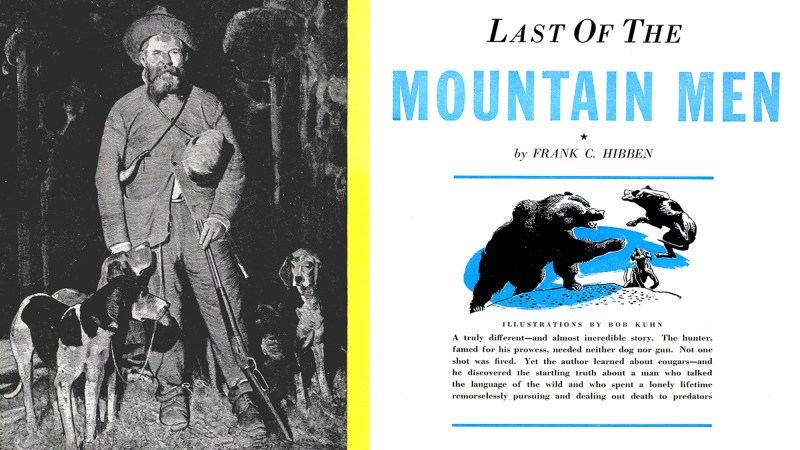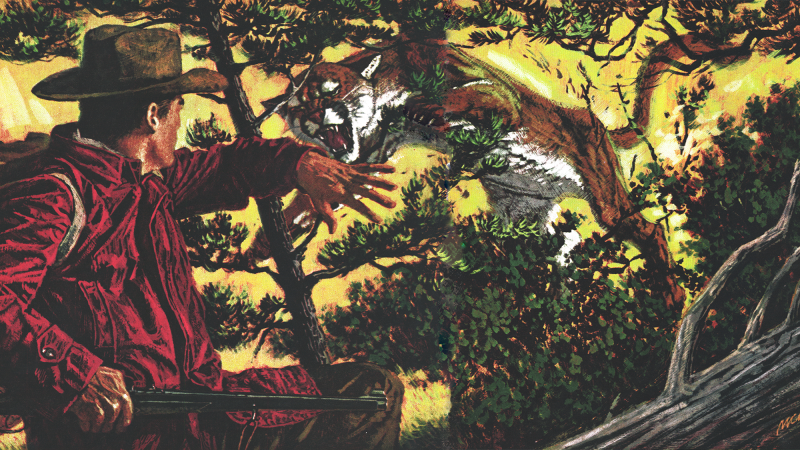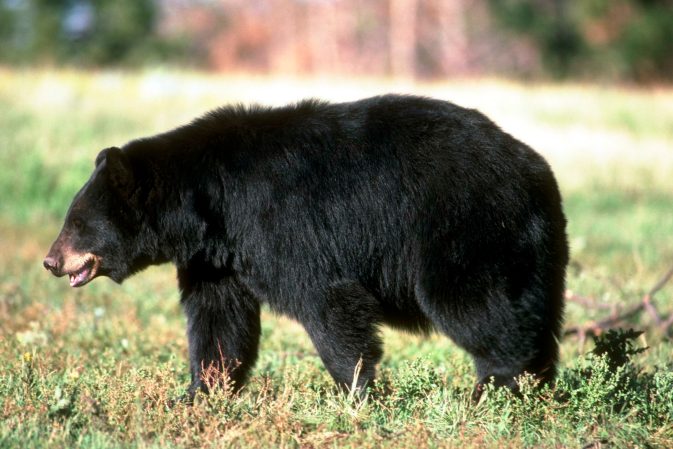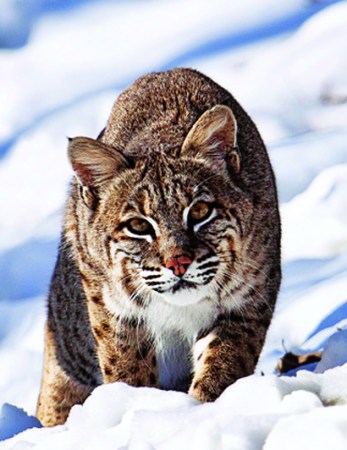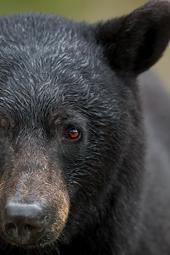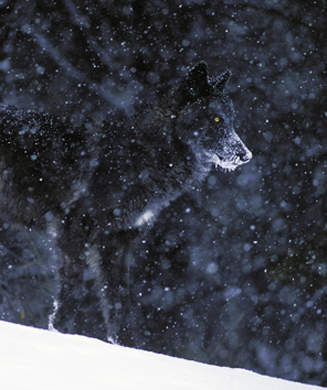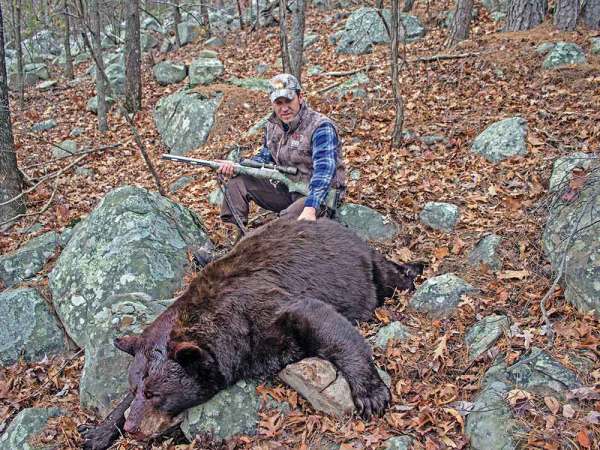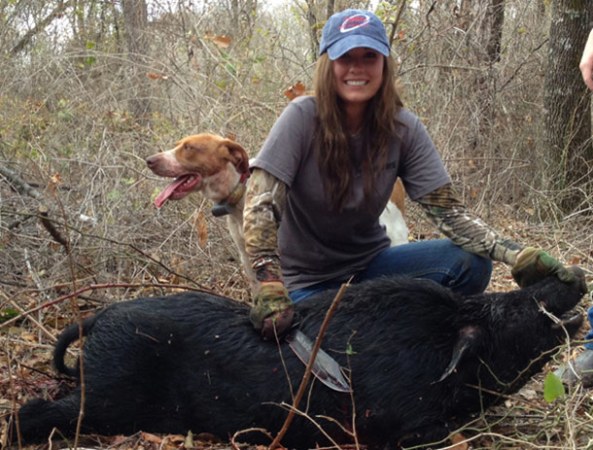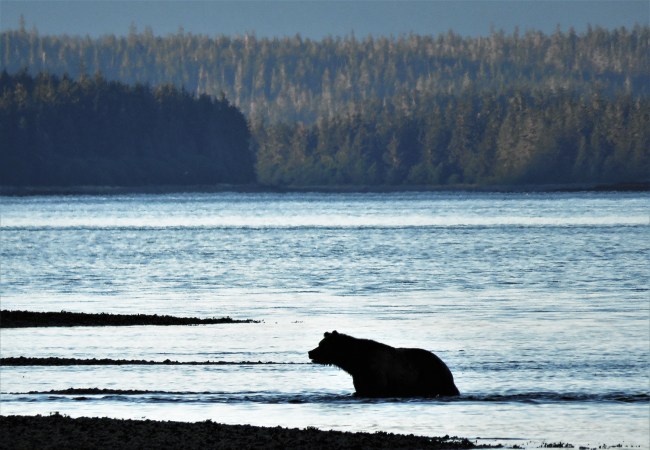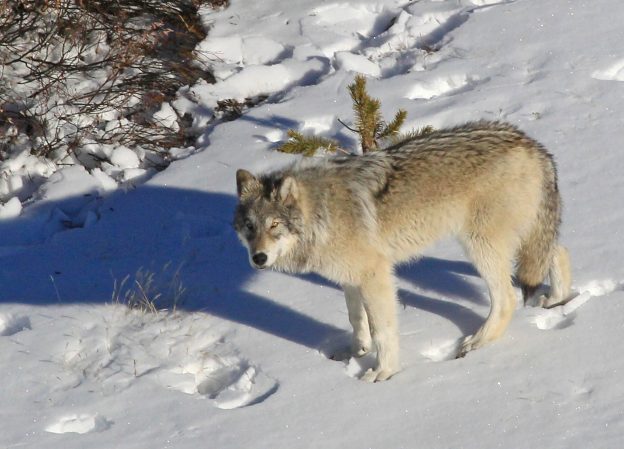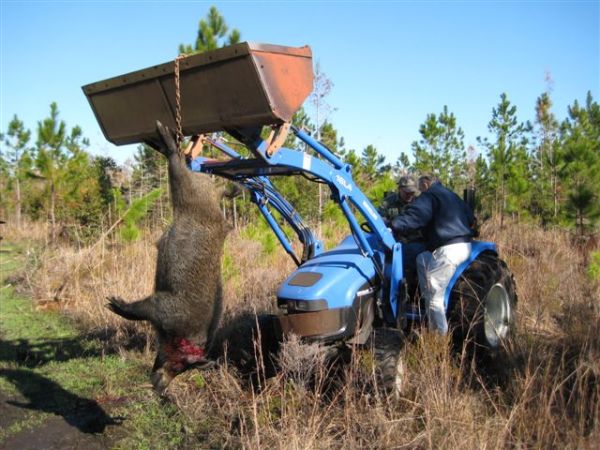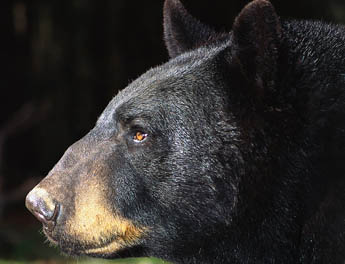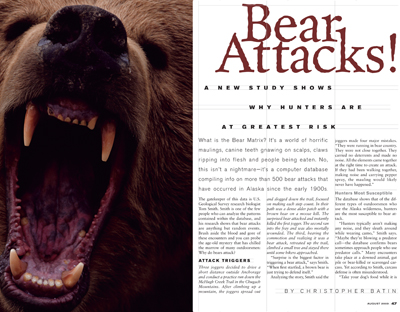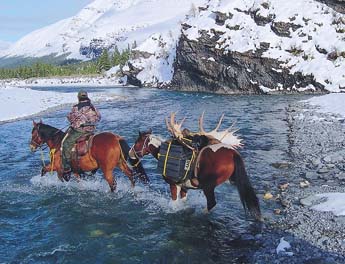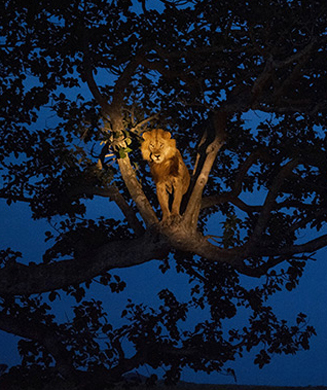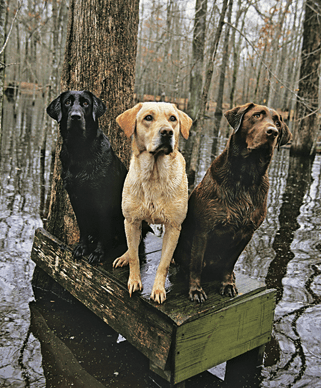One of the biggest thrills I ever had was meeting up with Willis Butolph, a legendary trapper for the U.S. government. It was almost 40 years ago, and I was just out of forestry college, working as a forest ranger in eastern Utah. In those days, lions were unprotected and bounties were given on them. Willis and I became close friends and I accompanied him on well over a hundred lion hunts.
Without exception, we used hounds to hunt lions. There simply was no other way to do it that was consistently successful, nor is there today. If you want a lion, you use hounds, though there are some other options that occasionally work.
TRACKING COUGARS
I know one person who was able to track a cat in fresh snow and kill it. Debra Bradbury did it near her ranch at Glenrock, Wyo., after a long pursuit. I’ve tried tracking many times but have never scored. The closest I came was jumping a cat from brushy cover. I didn’t see it, but I followed its tracks to a kill where the cat was bedded close by. I heard it run through the brush and saw the tracks it left behind. Since lions often bed in or on rock outcroppings or rimrock areas, this puts them up high where they can see danger approaching. Cats also have exceptional hearing and vision and can detect trouble (like you) from a long distance.
CALLING ALL CATS
It’s possible to call lions, but the odds of success are very low. First, of course, call where a cat can hear you. That’s a challenge, since lions are widely scattered and have large home ranges. Any cats that do hear you may not approach, depending on their mood or how hungry they are. Lions are accustomed to killing deer and are not as opportunistic as coyotes and bobcats, which hunt smaller prey. Murry Burnham, a legendary Texas hunter whose father invented the predator call, has called only a few lions after a lifetime of trying, mostly with a jackrabbit distress call. On the other hand, he’s called in thousands of coyotes, bobcats and other predators.
DON’T BOTHER STALKING
Forget about still-hunting. Trying to spot and shoot a lion by slowly walking and climbing is almost futile. I’ve spent a lifetime in the woods, much of it in prime lion country, and I’ve yet to see my first lion roaming freely. Some people claim they see them all the time. They must hunt where there are incredible populations of lions, or they’re somehow always in the right place at the right time.
HUNTING WITH HOUNDS
If you don’t have hounds, you have a couple of options. One is to become buddies with someone who has hounds and can take you hunting for free. The other is to hire an outfitter. Before you sign up for a lion hunt, however, do a reality check. You might have heard of hunts where the hounds tree a lion and it sits there, giving you all day to approach and then take your shot. Or you might have heard of a hunter who killed his lion only 300 yards from the truck because the outfitter found a fresh track crossing the road and the cat was bedded next to a nearby kill.
If these are your expectations, think again. A lion hunt can be the most rugged adventure you’ll ever have–or the easiest, depending on the circumstances and the country you’re hunting.
If you don’t have a problem with modern conveyances, you might be able to stay with the dogs by riding a snowmobile or ATV, or maybe a pickup truck or SUV. That’s not possible in a whole lot of lion country, but it can be done in some areas. If you’d rather hunt your cat afoot, then prepare for the worst. Chances are you’ll be in for an extremely physical hunt no matter what conveyances are available.
A reputable outfitter will have hounds that are deerbroke and are trained to run a track that’s a day old or more. You could be in for a long chase, lasting all day or even longer. Carry a pack that will accommodate extra clothing. I like layers that can be added or removed in response to the weather and the exertion required by the hunt. Be certain your boots are broken in and are insulated and waterproof. You’ll likely be hunting in snow and extreme cold.
Most lion hunts are done in winter, with the prime months being December through March.
CHOOSING AN OUTFITTER
Lion hunting is a very specialized activity. Choose a reputable outfitter who has been in business for a long time. Some are con artists who have gathered a pack of mediocre dogs and hunt in country where there are few lions. On the other hand, there are some young outfitters who are skilled and offer very good hunts.
Most outfitters nowadays offer hunts that have a dual price–the base fee and the kill fee. For example, you might pay $2,000 for the hunt and another $2,000 if you kill a lion.
WHERE TO HUNT
Of the 11 Western states, only California does not allow lion hunting, thanks to proposition 117, which was passed a dozen years ago by a majority of voters. Washington and Oregon do not allow hound hunting. In the other 10 states, seasons are typically designed according to the deer-herd objectives. Many units have a lion kill quota, depending on the number of lions and the deer population. When a unit’s quota is taken, its season ends. Lions taken by hunters must be reported to the state wildlife agency within a certain time period after the kill so the harvest can be tallied.
ON THE ROAD
Many years ago I fished a lake in California with pro football player Merlin Olsen and his son Nate. Three tagged trout were stocked in the lake two months before we fished it. One had already been caught, and there was a $200 reward for the angler who caught one of the remaining two. Imagine our surprise when Nate hooked and landed one, a rainbow that weighed about 5 pounds. No one believed the catch was on the level because of Merlin’s fame and the fact that thousands of anglers had been trying to catch those fish.
RIFLES VS. HANDGUNS
When I hunted with Willis Butolph years ago, we used .22 handguns. Most of the lions we treed were in piñon pines and junipers offering shots of 20 feet or so. I often believed we were undergunned, and today I’d opt for a rifle, simply because some cats may be treed 60 feet or more up a big ponderosa pine, requiring very precise shots through foliage and branches. On the other hand, a handgun allows easy mobility when you’re chasing the hounds, freeing your hands and arms to climb over icy rocks and snow-covered logs, and squeezing through dense timber. A rifle of at least .243 caliber would be my choice, and I’d want a handgun that packed the energy of at least a .41 Mag. or bigger. If using a handgun, I’d practice extensively so I could hit a small target consistently. A shoulder or behind-the shoulder shot will bring a lion down quickly.
For more on hunting, go to www.outdoorlife.com/hunting

